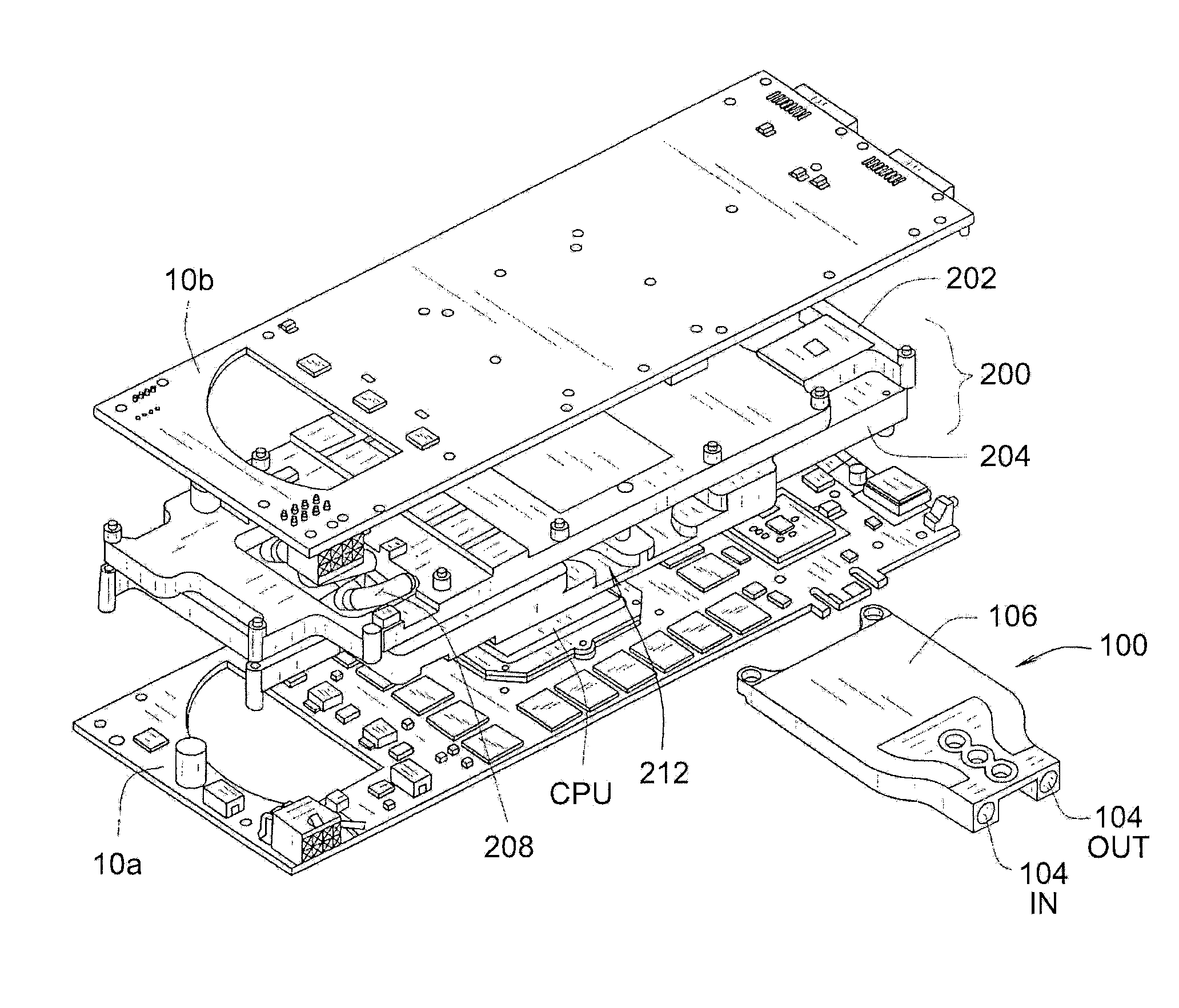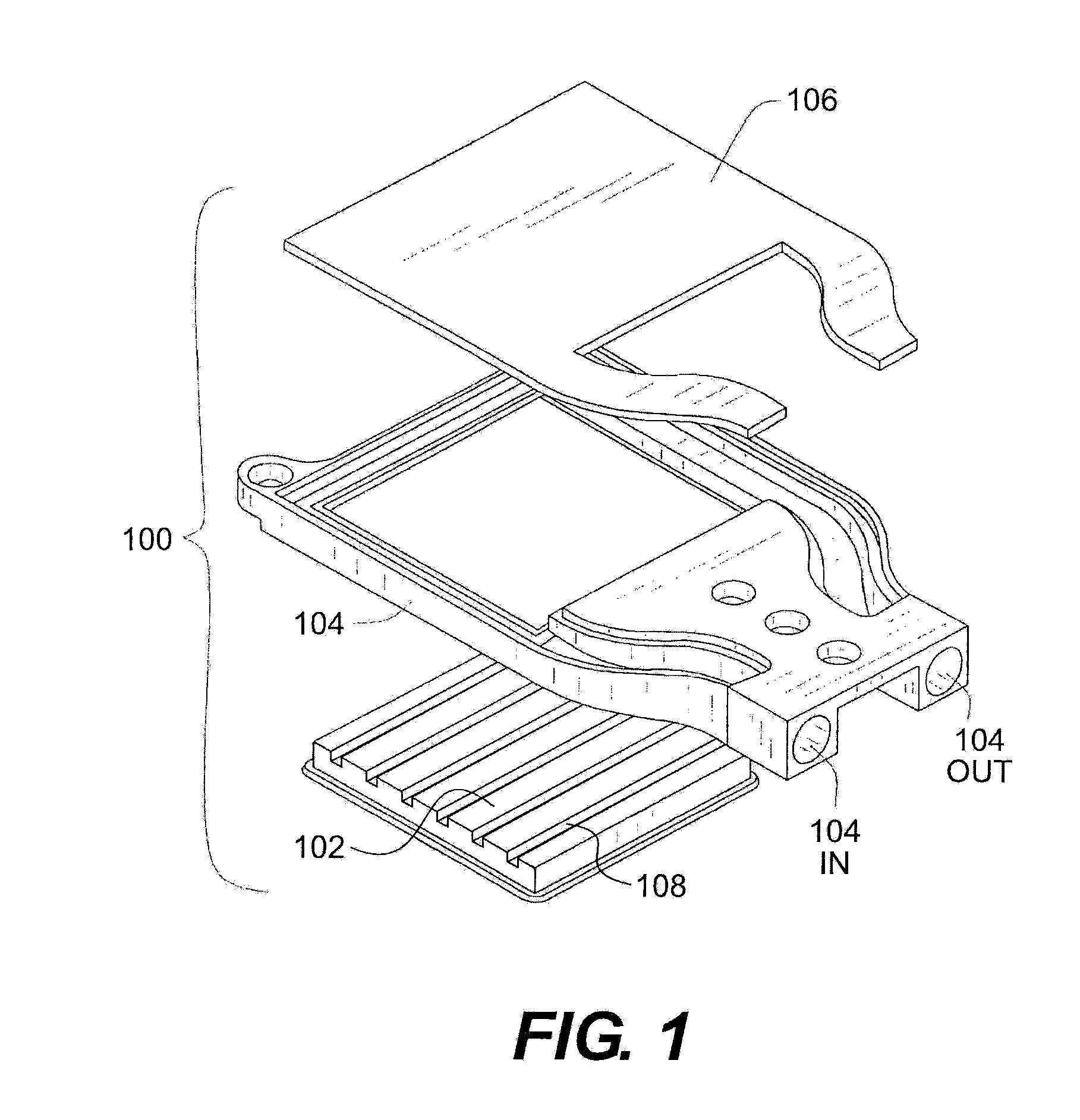Thermal interposer liquid cooling system
a technology of liquid cooling system and thermocouple, which is applied in the direction of indirect heat exchanger, electrical apparatus construction details, lighting and heating apparatus, etc., can solve the problems of individual integrated circuits, heat generation of individual components, and power consumption of motherboards and various auxiliary components,
- Summary
- Abstract
- Description
- Claims
- Application Information
AI Technical Summary
Benefits of technology
Problems solved by technology
Method used
Image
Examples
Embodiment Construction
[0018]The following detailed description illustrates the invention by way of example and not by way of limitation. The description enables one skilled in the art to make and use the present disclosure, and describes several embodiments, adaptations, variations, alternatives, and uses of the present disclosure, including what is presently believed to be the best mode of carrying out the present disclosure.
[0019]Personal computers, network servers, and many other variations of computing devices employ electronic sub-components such as circuit boards, adapter cards, daughter cards, DC / DC converters, hard drives, and optical drives mounted in an enclosed case or chassis. These various electronic sub-components, including a common power supply, generate heat during operation which must be dissipated from the chassis or case to avoid heat-induced damage or overheating of the various components. Common methods for extracting heat from the internal volume of a computer case or chassis inclu...
PUM
 Login to View More
Login to View More Abstract
Description
Claims
Application Information
 Login to View More
Login to View More - R&D
- Intellectual Property
- Life Sciences
- Materials
- Tech Scout
- Unparalleled Data Quality
- Higher Quality Content
- 60% Fewer Hallucinations
Browse by: Latest US Patents, China's latest patents, Technical Efficacy Thesaurus, Application Domain, Technology Topic, Popular Technical Reports.
© 2025 PatSnap. All rights reserved.Legal|Privacy policy|Modern Slavery Act Transparency Statement|Sitemap|About US| Contact US: help@patsnap.com



